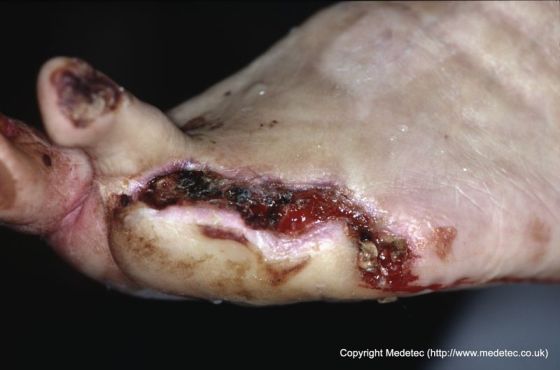Diabetic foot ulcers are a common complication for individuals living with diabetes. They are frequently caused by high blood sugar levels that result in nerve damage and poor circulation. These ulcers can develop quickly and, if untreated, may lead to infections or even potential amputations. By adopting specific foot care habits and being proactive, the risk of developing diabetic foot ulcers can be significantly reduced. Here are key prevention tips and strategies for effective diabetic foot care:
Foot Inspections and Proper Footwear
Daily foot inspections are key in diabetic foot care and identifying potential problems early. Look for cuts, cracks, blisters, redness, swelling, or any unusual changes in skin texture. Using a mirror can help check the soles of your feet, or asking a family member can be helpful. Wearing proper footwear is fundamental in preventing diabetic foot ulcers. Shoes should provide adequate support and a comfortable fit that does not cause pressure points or friction. Avoid high heels, tight shoes, or sandals with open toes. Contemplate specialized diabetic footwear that minimizes the risk of injury and provides extra protection.
Foot Hygiene and Toenail Care
Maintaining foot hygiene helps reduce the risk of infection. Wash your feet daily with warm water and mild soap. Avoid soaking feet for extended periods, as it may cause dryness. After washing, thoroughly dry your feet, especially the areas between your toes, to prevent fungal growth. Moisturize the tops and bottoms of your feet, but avoid applying lotion between the toes to reduce the risk of fungal infections.
Proper toenail care minimizes the risk of ingrown nails and infections. Trim your toenails straight across and file the sharp edges to prevent them from cutting into the surrounding skin. If managing toenails is difficult due to vision issues or dexterity limitations, professional assistance from a podiatrist may be helpful.
Manage Blood Sugar Levels
Managing blood sugar levels effectively can reduce the likelihood of developing diabetic foot ulcers. Consistently high blood sugar levels can impair wound healing and exacerbate nerve damage. To support improved blood sugar control, regularly monitor your glucose levels, follow your doctor’s treatment plan, and adhere to a balanced diet.
Addressing other risk factors can support overall foot health. Smoking, for instance, decreases blood flow to your extremities and delays healing. Quitting smoking and managing other health conditions, such as cholesterol levels, can promote better circulation and reduce risk.
Seek Professional Help
Professional foot care is highly recommended for those with diabetes. Schedule regular appointments with a podiatrist to address concerns such as calluses, corns, or ongoing issues. Professionals can provide valuable insights and make sure that complications are addressed promptly.
Learning about diabetic foot care can enhance your ability to prevent ulcers. Familiarize yourself with best practices, and communicate this knowledge with family members or caregivers to promote helpful support. Awareness can lead to better outcomes and earlier interventions when faced with potential issues.
Exercise Regularly
Physical activity improves circulation, which is beneficial for foot health. Low-impact exercises, such as walking or swimming, can be useful for maintaining overall mobility and preventing circulation-related complications. Contemplate exercises suited to your fitness level and consult with a healthcare provider before starting any new routine.
Schedule Your Diabetic Foot Care Appointment
Preventing diabetic foot ulcers is achievable with consistent effort and informed practices. You can significantly lower the risk of complications by inspecting your feet daily, wearing suitable footwear, and managing overall health. Schedule a consultation with a podiatrist or healthcare provider for further assistance and personalized advice.

